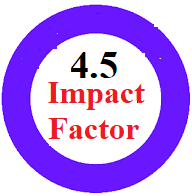HYBRID DEEP LEARNING MODELS FOR MULTI-CLASS CLASSIFICATION OF CHEST X-RAY IMAGES: NORMAL, PNEUMONIA, AND COVID-19
Keywords:
Hybrid Deep Learning, Chest X-Ray Classification, Pneumonia Detection, COVID-19 Diagnosis, Convolutional Neural NetworksAbstract
CXRs remain a major diagnostic method that assists in the identification of respiratory diseases such as COVID-19, pneumonia, and tuberculosis. They are helpful in the clinical setting, especially in low and middle-income countries, where they serve as the gateway to the healthcare system as a result of their affordability when compared to CT and MRI scans. In spite of these advantages, CXR scans still exhibit considerable challenges, particularly in diagnosing CXRs which remains a labor-intensive high expertise process with a large range of inter-reader variability. The problem is exacerbated by multi-class classification where there is pneumonia and COVID-19 which have overlapping radiographic features. The problem that this particular work intends to address is developing and testing the hybrid models that consists of CNNs and transformers models to increase diagnostic accuracy for classification of chest X-ray images into Normal, Pneumonia, and COVID-19 categories. The dataset used was comprised of 7,135 chest X-ray images, which after were subjected to uniform pre-processing to aid in consistency and standardization. Hybrid models were developed such that they paired CNNs with other transformer-based models like DenseNet121 + Swin Transformer and EfficientNetB0 + Vision Transformer. With these models, training was undertaken using the TensorFlow/Keras framework and evaluation was done based on accuracy, precision, recall, F1 score, and confusion matrix. The findings indicate that the DenseNet121 + Swin Transformer model achieved the highest accuracy, precision, and recall scores, outperforming all other models, which demonstrates its potential for more reliable classification compared to CNN-based techniques. The study nonetheless notes the considerable potential of such hybrid models to augment diagnostic functionalities in clinical practice, even with hurdles like dataset imbalance and the absence of real-world validation.
















